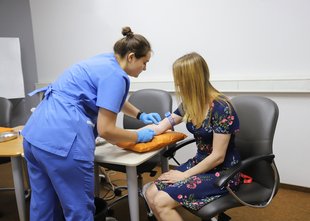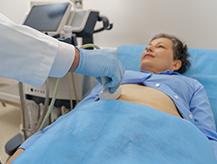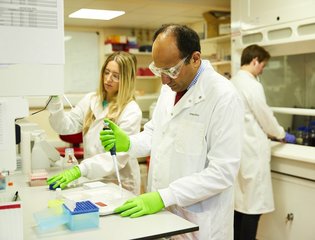Launch of Surveillance for BRCA carriers at UCLH

Woman having a blood test via her arm, with a nurse in blue scrubs.
University College London Hospitals (UCLH) has introduced a new ovarian cancer surveillance service for women with BRCA1 and BRCA2 gene mutations, using the ROCA test.
UCLH is the first NHS trust in the UK to offer this kind of surveillance outside of a clinical trial. So, what exactly is the ROCA test - and who is it for?
What is the ROCA test?
The Risk of Ovarian Cancer Algorithm (ROCA) test combines a blood test with an algorithm to estimate a woman’s risk of having ovarian cancer.
The blood test looks at levels of a protein called CA125, which can be a marker for ovarian cancer. On its own, a CA125 test isn’t reliable enough to be used for routine surveillance – it’s mainly used to diagnose ovarian cancer in women who already have symptoms. A result below 35 units per millilitre (U/mL) is generally considered ‘normal’.
The ROCA test takes things further. Instead of relying on a single result, it tracks CA125 levels over time for each individual woman. The algorithm then uses these trends – alongside factors like age and menopausal status – to calculate a personalised risk score.
What happens if the ROCA test picks up something unusual?
If the test suggests there might be a concern, the patient is invited for a clinical examination and an ultrasound scan. The aim is to catch any developing cancer as early as possible.
Research shows that using the ROCA blood test every four months can reduce the chances of being diagnosed with late-stage ovarian cancer.
What are the current NICE recommendations?
NICE published updated guidance in March 2024 for women at high risk of ovarian cancer.
Women in this group are advised to consider risk-reducing surgery to remove their ovaries and fallopian tubes – known as risk-reducing bilateral salpingo-oophorectomy (RRBSO). The recommended age for surgery depends on your specific gene fault, as well as more individual factors such as your family history, but it’s important to weigh this against the long-term effects of early menopause. The earliest age surgery is advised is 35.
NICE is clear: the only proven way to reduce the risk of ovarian cancer for these women is through surgery, and delaying should be seen as a short-term decision. However,
risk-reducing surgery is a big decision, and there are many reasons why a woman might not be ready to go ahead at the specific age it’s recommended.
People choosing to delay this surgery should be told that surveillance, like the ROCA test, doesn’t reduce their risk of cancer – its aim is to catch cancer as early as possible. It isn’t an alternative to surgery.
The NICE guidelines say that surveillance should only be considered for people who choose to delay or decline surgery, and who meet specific criteria:
- over 35 with a faulty BRCA1 gene
- over 40 with a faulty BRCA2 gene
- over 45 with a faulty RAD51C, RAD51D, BRIP1 or PALB2 gene.
If surveillance is chosen, it should include CA125 tests every four months using an established algorithm like ROCA, plus an annual review to discuss surgery options.
Although NICE acknowledged that the infrastructure for surveillance wasn’t yet in place, UCLH’s new programme – run through its Familial Cancer Clinic – is the first example of this system in action.
What about other types of gene faults?
The ROCA test has been studied mainly on BRCA1 and BRCA2 carriers. In future, it may be extended to include other, rarer mutations like RAD51C and RAD51D, which also increase the risk of similar types of ovarian cancer.
However, Lynch syndrome doesn’t increase the risk of the same type of ovarian cancer as BRCA1 and BRCA2, and there’s currently no evidence that surveillance would benefit people with this condition.
Where is the programme available?
Right now, the service is available in North Central London through UCLH’s Familial Cancer Clinic. But it’s hoped that other NHS trusts across the country will follow suit in the future.


